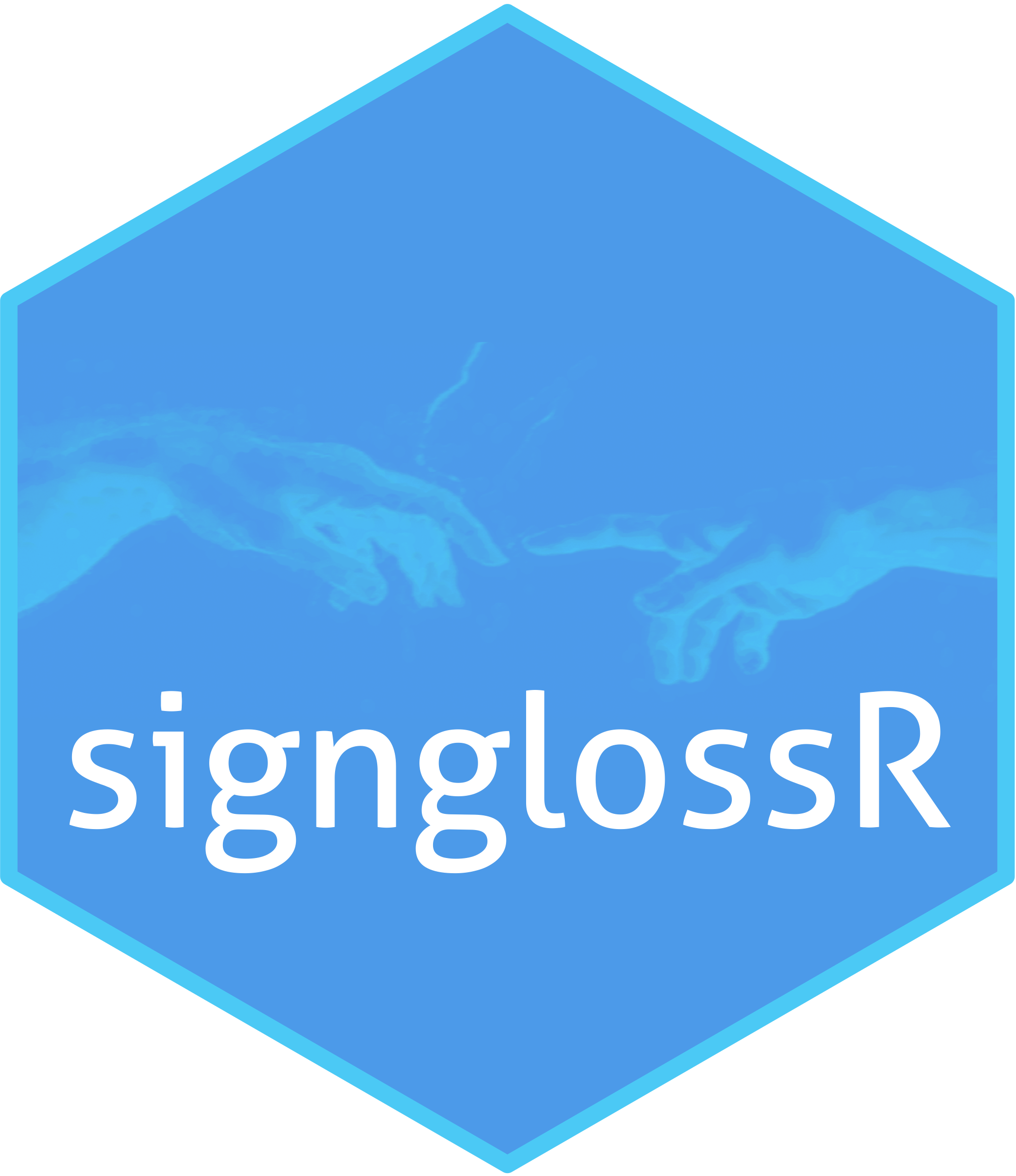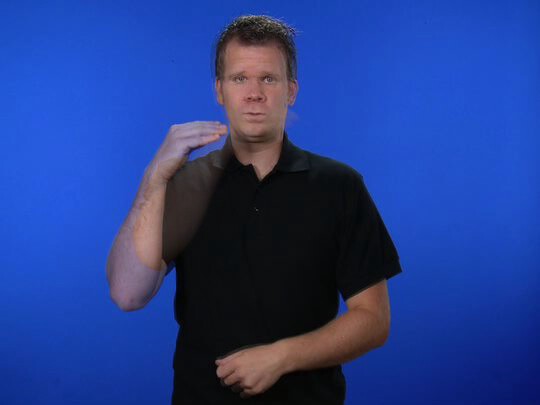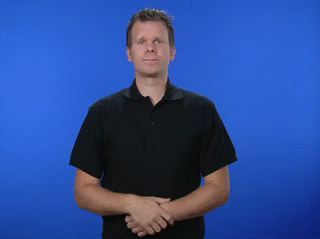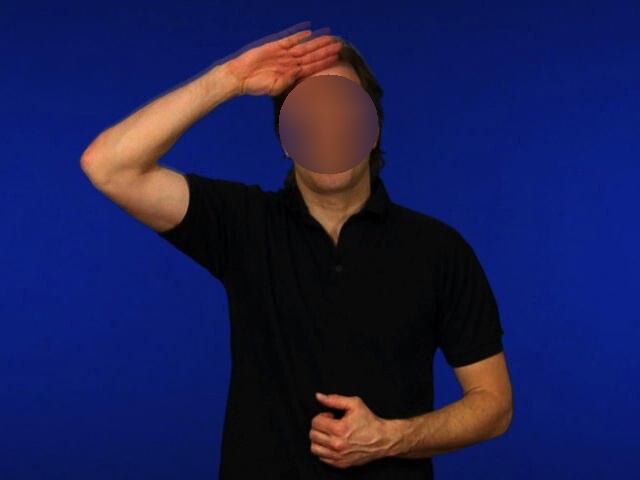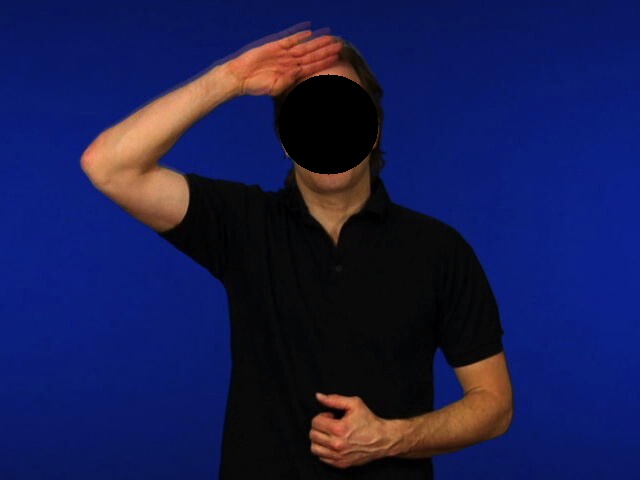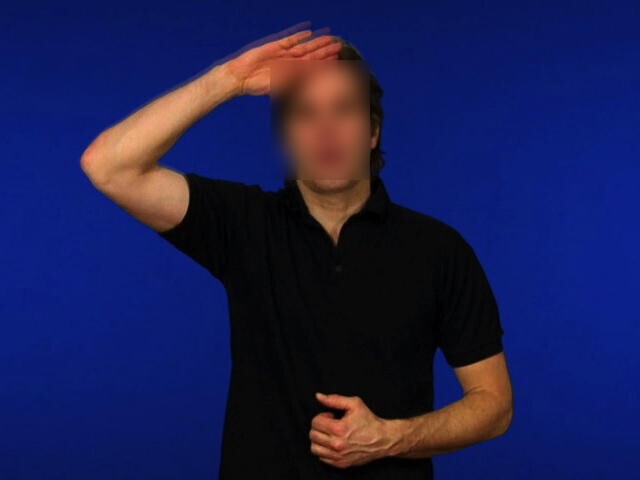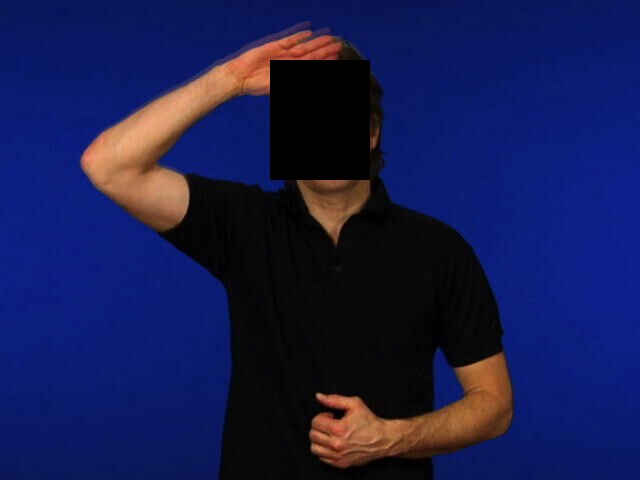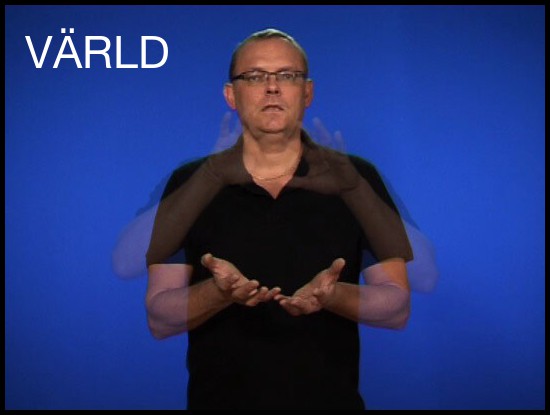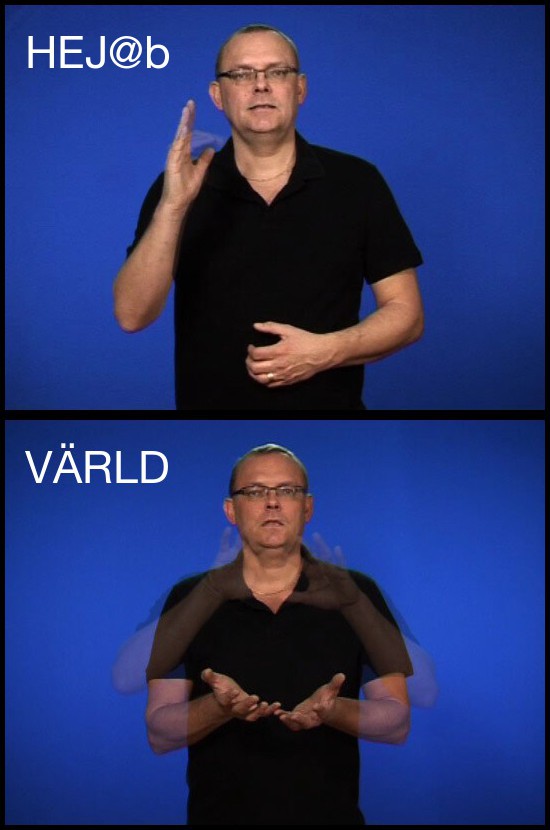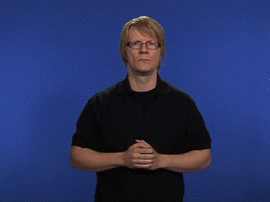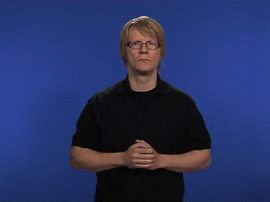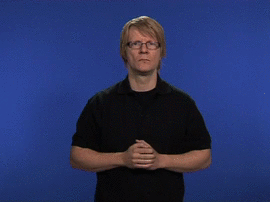An R package that facilitates visual representation of sign language data
Download using:
devtools::install_github("borstell/signglossR")
The signglossR package is described in the LREC workshop proceedings paper found here: https://www.sign-lang.uni-hamburg.de/lrec/pub/22006.html.
The R package signglossR includes various R functions (created, adapted, and imported) that may help sign language researchers work with a visual representation of sign language data (i.e. videos and images). Hopefully, overcoming some of the technical obstacles will encourage more researchers to adopt #GlossGesang and avoid #TyrannyOfGlossing (see Glossing). The intention of this package is to collect many different existing resources and adapt them to sign language researchers. The hard work in actual coding has been done by others -- signglossR relies heavily on other R packages such as magick, opencv, and av, and also makes use of background command line prompts through R, especially ImageMagick and ffmpeg.
The section Images describes tools for accessing and modifying image files, such as downloading still images of signs from online sign language dictionaries, but also modifying such images by cropping or creating overlays, or adding annotated text or automatic or manual censoring/blurring. From version 2.0, it is also possible to work directly with ELAN for automated visual glossing and also simply read annotations from .eaf files directly into R.
The section Videos describes tools for accessing and modifying video files, such as downloading videos of signs from online sign language dictionaries. In versions >=1.1.0, this also includes tools for modifying videos, such as repeating, slowing down, and converting to .gif. From version 2.0, it is also possible to work directly with ELAN for automated visual glossing. From v2.1.0 it is also possible to download GIFs for STS directly with get_gif().
The section Miscellaneous describes other functions not directly related to image or video processing.
Glossing has been a standard way of representing sign language data in linguistics research. In practice, this has meant using written word labels in place of signs, such as in this example from the STS Dictionary:
_____headshake
IX EAT MEAT IX
'They don't eat meat'
(Svenskt teckenspråkslexikon 2020, example 01913-2)
This is problematic since sign languages are visual languages, and any written representation of the signs comes with an incredible loss of information: Which signs are used if there are variants for the same concept?, How are signs moving in space?, What non-manual signals are present alongside the manual signs?, etc.
Many sign language researchers are in favor of the concept of #GlossGesang, named after Julie Hochgesang (a proponent of visual glossing and opponent of the Tyranny of glossing). #GlossGesang has been tentatively defined as:
- "Always present sign language data in a visual format (videos/images) without relying solely on glossing." (Börstell 2019)
At the time of this first release, the only to languages available for data downloads are ASL (American Sign Language) and STS (Swedish Sign Language; svenskt teckenspråk). These are chosen out of convenience but also as they both have online lexical resources that are not heavily copyrighted. I have a few more languages lined up, hopefully to be added soon (looking at you FinSL, FinSSL, and NZSL...). However, most functions in signglossR can be used with any image/video file, such as those you may already have locally on your computer, from your own dataset. Here, signglossR can be used to quickly prepare your data for teaching or presentation slides.
NB: If you use signglossR to download data, make sure you cite not only this R package itself but also attribute the original sources of language resources behind the data (see License).
This function inputs an ID number and downloads the image of the corresponding sign entry in the selected language.
Example:
get_image(id=10, acronym="sts")
In this image, the image of BJÖRN ('bear') from STS becomes very wide as there are several frames to represent the sign. We could try to use the overlay argument to create an overlay image instead:
get_image(id=10, acronym="sts", overlay=TRUE)
This did not turn out very nice, since the movement segments get lost in the overlay. We could go back and try to use the trim argument, which trims each frame to a factor (0 to 1) of its original width:
get_image(id=10, acronym="sts", overlay=FALSE, trim=.8)
(NB: overlay and trim are currently only available for STS. Below are other options available for ASL.)
Maybe we want to add the text gloss onto the image (text glosses are not all bad, as long as they are accompanied by something more visual, like images/videos!). We can do this by setting the glosstext argument to TRUE:
get_image(id=103, acronym="asl", glosstext=TRUE)
Oh no! This didn't turn out very nice! The default anchor point (gravity) for the text annotation is north (i.e. top middle part of frame), but this part of the image is blocked by the signer here. We can change the gravity to something else:
get_image(id=103, acronym="asl", glosstext=TRUE, gravity="southwest")
This looks better! In other cases, the default gravity position may be perfectly fine:
get_image(id=103, acronym="asl", glosstext=TRUE, gravity="southwest")
This function inputs an ID number and downloads the GIF of the corresponding sign entry in the selected language (currently only STS.
Example:
get_gif(10)
The get_image() function passes its arguments onto subfunctions for individual language resources, i.e. get_image_asl() and get_image_sts().
Maybe you need to censor part of your image for some reason. Perhaps to hide the identity of the signer. This can be done using the function censor_image() which allows you to either blur or completely censor some region of the image. Default style is set to blur. If automatic is set to FALSE (default is TRUE), you will need to define a geometry region; if set to TRUE, the imported function opencv::ocv_facemask() will automatically detect faces and use as a mask for blurring/censoring.
censor_image(file="STS_taxi-00001.jpg", automatic=TRUE, style="blur")
Through the pipe function, we can download and process videos in a single run. This is actually how the censored example below was generated:
get_image(1) %>%
censor_image(style="black")
The automatic function is particularly useful when there are multiple regions to be censored, as multiple regions can be identified and masked at once. However, the method may fail if the face is covered:
get_image(10, acronym="sts", overlay=FALSE) %>%
censor_image(style="black")
Below are some examples of manually defined regions to censor.
censor_image(file=path, automatic=FALSE, region = "100x120+270+60", style="blur")
censor_image(file=path, region = "100x120+270+60", method="black")
The region argument defines where the censored rectangle should be, but also of what size it should be. The region to be modified defaults to '100x150+100+100', which is defined in ImageMagick geometry syntax (width x height +upper_x +upper_y).
This function is useful for preparing images of signs for e.g. teaching or presentation slides or publications. The function has merged many of the options available in the magick package, and allows you to crop and scale (i.e. resize) images, but also add text annotations or a border frame:
get_image(id, acronym="sts", overlay=TRUE) %>%
make_image_ex(text=id2gloss(id), fontsize=45, gravity="northwest", border=TRUE)
With this function, you can combine several images into one single output image. You can choose between either an overlay output image, or one with distinct frames either horizontally aligned (stack=FALSE) or stacked vertically (stack=TRUE).
If we create a pipeline to generate individual frames, we can get this type of workflow:
signs <- c(12747, 1210)
sequence <- c()
for (n in signs) {
sequence <- c(sequence, make_image_ex(get_image(n, "sts", overlay = T), text=id2gloss(n),
fontsize = 45, border = T, gravity = "northwest"))
combine_images(sequence, destfile = "./helloworld.jpg", stack=FALSE)
combine_images(sequence, destfile = "./helloworld.jpg", stack=TRUE)
This function inputs an ID number and downloads the video of the corresponding sign entry in the selected language.
Example:
get_video(id=10, acronym="sts")
NB: This example is shown as a .gif even though the actual download will use the video format of the original source (mostly .mp4). GIF conversion functionality is available from version 1.1.0 with the function make_gif() (see below).
We all love GIFs (hard /g/)! With this function, which uses command line prompts, you can input any video file and it outputs a .gif file. You can specify the scale of the video dimensions, and the framerate fps (it is often smart to downsize a little, as GIFs are often heavy).
make_gif(file="STS_dov-00042-tecken.mp4", scale=.5, fps=12.5)
If you pipe a video download from get_video() to make_gif(), both video file and gif file will be saved, for example:
get_video(42) %>%
make_gif(scale=.5, fps=12.5)
$ STS_dov-00042-tecken.mp4
$ STS_dov-00042-tecken.gif
Often when you want to show an example during a presentation etc., you may want to repeat or show a slowed down rendition of the sign. These things can be done with make_video_ex() which takes a speed (video playback speed) and rep (repeat; default is FALSE) argument. If speed is set to .7 (=70%), we get a slightly slowed down video output:
make_video_ex(file="STS_dov-00042-tecken.mp4", speed=.7)
We could also set the rep argument to TRUE (or T for short), which means that the video example rendered will first play once in normal speed, then repeated once with slower speed, here set to 30% (speed = .3):
get_video(42) %>%
make_video_example(rep=T, speed=.3)
The get_video() function passes its arguments onto subfunctions for individual language resources, i.e. get_video_asl() and get_video_sts().
This function reads ELAN annotation files (.eaf) from a directory and outputs a data frame (can be a little slow in case of many files, but the files read should be printed to the console).
This function creates image files (with or without text) from an ELAN annotation file.
This function creates video file clips (with or without text) from an ELAN annotation file.
A simpler function for simply splitting a video based on ELAN annotation files, e.g.:
split_elan_video(elan_path = "/path/to/eaf/file(s)",
segmentation_tier = "name_of_segmentation_tier",
video_path = "/path/to/video/file(s)",
annotation_tag = T, # will add contents of ELAN cells in output filenames
padding = 0, # adds (or subtracts if negative) frames (in milliseconds) before+after segment duration
video_input_format = ".mov", # specify input video format in directory (default is .mp4)
video_output_format = ".mp4") # specify output video format (default is .mp4)
This function creates a data frame for the segmentation of videos from ELAN annotation files.
This function reads OpenPose generated JSON files in a directory and outputs a data frame.
This function inputs a data frame from read_openpose(wide=FALSE) (.eaf) and plots the positions of the hands (keypoints 4 and 7) onto a estimated signer silhouette.
Mostly for fun, but can estimate a signer based on an Openpose data sequence.
Alongside the standard R citation() function for citing packages (or R itself), the function cite_source() outputs the preferred citation format of the language resource of a language.
Example:
> cite_source("asl")
To cite ASL Signbank in publications, please use:
Julie A. Hochgesang, Onno Crasborn & Diane Lillo-Martin. 2023. ASL Signbank.
New Haven, CT: Haskins Lab, Yale University.
https://aslsignbank.haskins.yale.edu/
(See also: https://aslsignbank.haskins.yale.edu/about/conditions/)
A BibTeX entry for LaTeX users is
@Manual{aslsignbank,
title = {{ASL Signbank}},
author = {Julie A. Hochgesang and Onno Crasborn and Diane Lillo-Martin},
organization = {Haskins Lab, Yale University},
address = {New Haven, CT},
year = {2023},
url = {https://aslsignbank.haskins.yale.edu/}
}
This function takes an ID gloss as its input and returns the sign entry's corresponding ID number.
Example:
> gloss2id("DEAFix", acronym="asl")
[1] "103"
Case is irrelevant:
> gloss2id("deafix", acronym="asl")
[1] "103"
This function takes an ID number as its input and returns the sign entry's corresponding ID gloss.
Example:
> id2gloss(1)
[1] "TAXI(J)"
Integer or string is irrelevant:
> gloss2id("103", acronym="asl")
[1] "DEAFix"
id2gloss() and gloss2id() call on specific subfunctions per language: id2gloss_asl(), id2gloss_asl(), id2gloss_sts(), gloss2id_sts()
With the function search_corpus(), you can input a corpus ID gloss and it takes you directly to the search hits of an online corpus to show you the results. NB: Currently only available for STS:
> search_corpus("TAXI(J)")
[1] "https://teckensprakskorpus.su.se/#/?q=TAXI(J)"
Small functions that only serve to assist other functions.
This function enables the use of piping with %>% (originally from the magrittr package, well known from tidyverse).
Example:
get_image(1, acronym="sts", overlay=TRUE) %>%
censor_image(region = "100x120+270+60")
For checking inputs.
The logo was created by me using a combination of own code for reading images and plotting them in ggplot2. The hex sticker is a nod to the tidyverse logos and was rendered using the hexSticker package. The color is turquoise which is a color that I like and also relates to the deaf world. The motif is chosen because it is an iconic image of hands, and also because the two hands almost form G handshapes (in many one-handed manual alphabets). And the gg structure reminds me of both R packages in tidyverse, but also the concept of #GlossGesang!
-
This R package can be used, modified, and shared freely under the CC BY-NC-SA 4.0 license.
-
Please acknowledge any use of the
signglossRpackage. The preferred citation is given by thecitation("signglossR")function given below, alongside the accompanying paper also listed in BibTeX further below. -
Do cite the original sources when using any material downloaded by
signglossR. The preferred citations for these can be found using thesignglossRfunctioncite_source()which takes the sign language acronym of the language resource in question as its only argument (e.g.cite_source("asl")).
citation("signglossR")
To cite reports in publications, please use:
Börstell, Carl. 2022. Introducing the signglossR Package. In Eleni Efthimiou, Stavroula-Evita Fotinea, Thomas Hanke, Julie
A. Hochgesang, Jette Kristoffersen, Johanna Mesch & Marc Schulder (eds.), Proceedings of the LREC2022 10th Workshop on the
Representation and Processing of Sign Languages: Multilingual Sign Language Resources, 16–23. Marseille: European Language
Resources Association (ELRA). https://www.sign-lang.uni-hamburg.de/lrec/pub/22006.pdf.
A BibTeX entry for LaTeX users is
@inproceedings{borstell:22006:sign-lang:lrec,
author = {B{\"o}rstell, Carl},
title = {Introducing the {signglossR} Package},
pages = {16--23},
editor = {Efthimiou, Eleni and Fotinea, Stavroula-Evita and Hanke, Thomas and Hochgesang, Julie A. and Kristoffersen, Jette and Mesch, Johanna and Schulder, Marc},
booktitle = {Proceedings of the {LREC2022} 10th Workshop on the Representation and Processing of Sign Languages: Multilingual Sign Language Resources},
maintitle = {13th International Conference on Language Resources and Evaluation ({LREC} 2022)},
publisher = {{European Language Resources Association (ELRA)}},
address = {Marseille, France},
day = {25},
month = jun,
year = {2022},
isbn = {979-10-95546-86-3},
language = {english},
url = {https://www.sign-lang.uni-hamburg.de/lrec/pub/22006.pdf}
}
